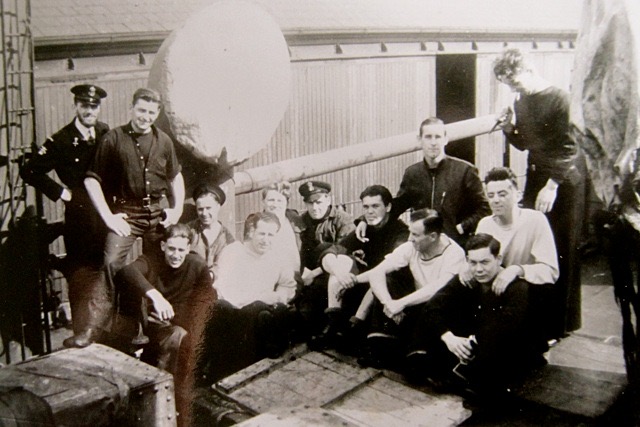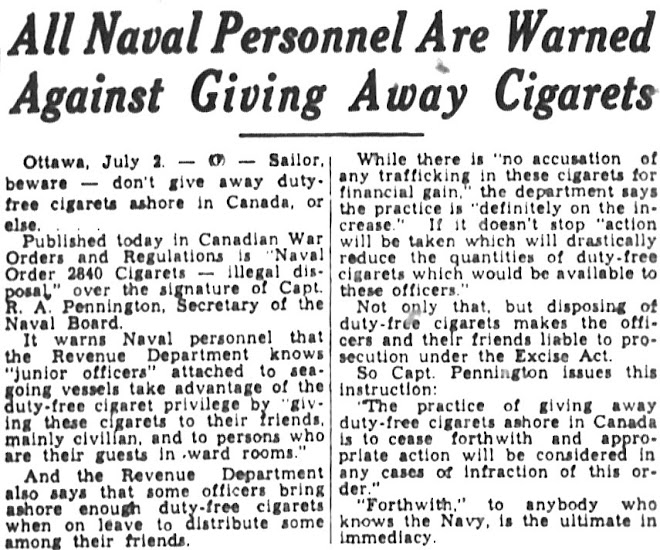Dressing Up the Series "Three Months in The Med"
Using Photos of the ROYAL NAVY During WORLD WAR II
Troops dashing ashore from a landing craft assault on the first day of the
invasion of the island of Sicily. Photo - Mason, H. A. (Lt), RN photogr.
Imperial War museum (IWM) A 17960
While sharing newspaper clippings from The Montreal Gazette for the first two entries of "Three Months in the Mediterranean, 1943" I also did a bit of digging. I looked on occasion for a suitable photo to back up a story or "dress up the series" and while so doing I found a new photo here, another one there and quickly realized I have not yet seen or shared all the photos related to WWII in Sicily and Italy that are housed in the Imperial War Museum, U.K. Yes, there are over 11,000,000... no one has seen them all!
But after viewing a few re the armada of Allied ships on its way to Sicily in July, 1943, I thought I'd share a few here. Tip of the ice berg? I would say so. You have been warned. Yes, more will be coming soon.
Below are just a few I have unearthed (not all re the largest armada of all time, up to the date of Operation HUSKY) and I provide links so that readers can dig a bit deeper when time is available.
Happy Hunting, I say.
2. THE ROYAL NAVY DURING THE SECOND WORLD WAR: OPERATION HUSKY, SICILY, JULY 1943
3. THE ROYAL NAVY DURING THE SECOND WORLD WAR: OPERATION HUSKY, SICILY, JULY 1943
4. THE ROYAL NAVY DURING THE SECOND WORLD WAR
5. SICILIAN INVASION: THE LANDING NEAR PACHINO. 3 TO 10 JULY 1943, ON BOARD THE SLOOP HMS ALYNBANK IN CONVOY.
6. THE ROYAL NAVY DURING THE SECOND WORLD WAR: OPERATION HUSKY, SICILY, JULY 1943
7. With the Invasion Fleet, July 1943: An Officer Explains the Assault Plan to his Men Before the Landings in Sicily
8. THE ROYAL NAVY DURING THE SECOND WORLD WAR
Please click here to view more photos re WWII, e.g., Photographs: Operation Husky, Sicily 1943
Please click here to view news clippings from my most recent series, using The Montreal Gazette, re "Three Months in the Mediterranean," 1943 (2)
1. ARMADA TO SICILY: ALLIED INVASION SHIPS SET OUT. 3 TO 10 JULY 1943, ON BOARD THE SLOOP HMS ALYNBANK, IN CONVOY.
Object description: An American freighter on her way to Sicily with troops, landing
craft and other equipment. Photo - Allen, E. E. (Lt), RN official photographer
Imperial War Museum © IWM A 17902
2. THE ROYAL NAVY DURING THE SECOND WORLD WAR: OPERATION HUSKY, SICILY, JULY 1943
Object description: Bathed in sunlight, part of the invasion armada in line ahead,
leaving Alexandria bound for Sicily. Note the barrage balloons above the ships.
3. THE ROYAL NAVY DURING THE SECOND WORLD WAR: OPERATION HUSKY, SICILY, JULY 1943
the horizon ships of a fast convoy, carrying troops and war equipment from Port
Said, overtake the slow convoy from Alexandria, all part of the invasion armada
Object description: Operation Husky, The Sicily Landings 9 - 10 July 1943.
A small section of the vast armada of ships which took part in the invasion of
Sicily as photographed from landing ship headquarters HILARY at dawn of the first
© Imperial War Museum (IWM) A 17945
Description: A view from the bridge of HMS ALYNBANK as she approached
Pachino, Sicily. The ship in the background may well be the HMS KEREN.
Photo - Lt. E. E. Allen, RN Official Photographer. © IWM A 17906
6. THE ROYAL NAVY DURING THE SECOND WORLD WAR: OPERATION HUSKY, SICILY, JULY 1943
Description: A loaded landing craft tank (LCT 412) taking RAF personnel
to the Sicilian shores near Pachino during the invasion of the island.
Photo Credit - Lt. E. E. Allen, RN Official Photographer.
Imperial War Museum, IWM A 17907
Description: A view along the deck of the ship. A group of British soldiers sit
on the deck, gathered around an officer sitting on a crate who is holding a map.
One soldier stands facing away from the viewer at the back of the group.
Ardizzone, Edward Jeffrey Irving © IWM Art.IWM ART LD 3455
8. THE ROYAL NAVY DURING THE SECOND WORLD WAR
Description: Operation Husky, The Sicily Landings 9 - 10 July 1943.
Scene in the early morning as the invasion fleet closed in to land troops,
tanks and guns during the start of the invasion of Sicily.
9. THE CAMPAIGN IN SICILY 1943
10. SICILY: ROYAL NAVY BRINGS THE INVASION FORCES. 10 JULY 1943, SICILY.
Description: Operation Husky, The Sicily Landings 9-10 July 1943.
Ships of the invasion fleet are wreathed in smoke from burning ships
and shore batteries as they close in to land troops and equipment in the
early morning. Photo - Mason, H. A. (Lt.), RN photogr. IWM A 17957
Description: Troops dashing ashore from landing craft.
Photo - Mason, H. A. (Lt.), RN Photogr. © IWM A 17959
More photos to follow re the Allied landings and campaign in Sicily.
Please click here to view more photos re WWII, e.g., Photographs: Operation Husky, Sicily 1943
Please click here to view news clippings from my most recent series, using The Montreal Gazette, re "Three Months in the Mediterranean," 1943 (2)
Unattributed Photos GH


.jpg)
.jpg)
.jpg)


















































